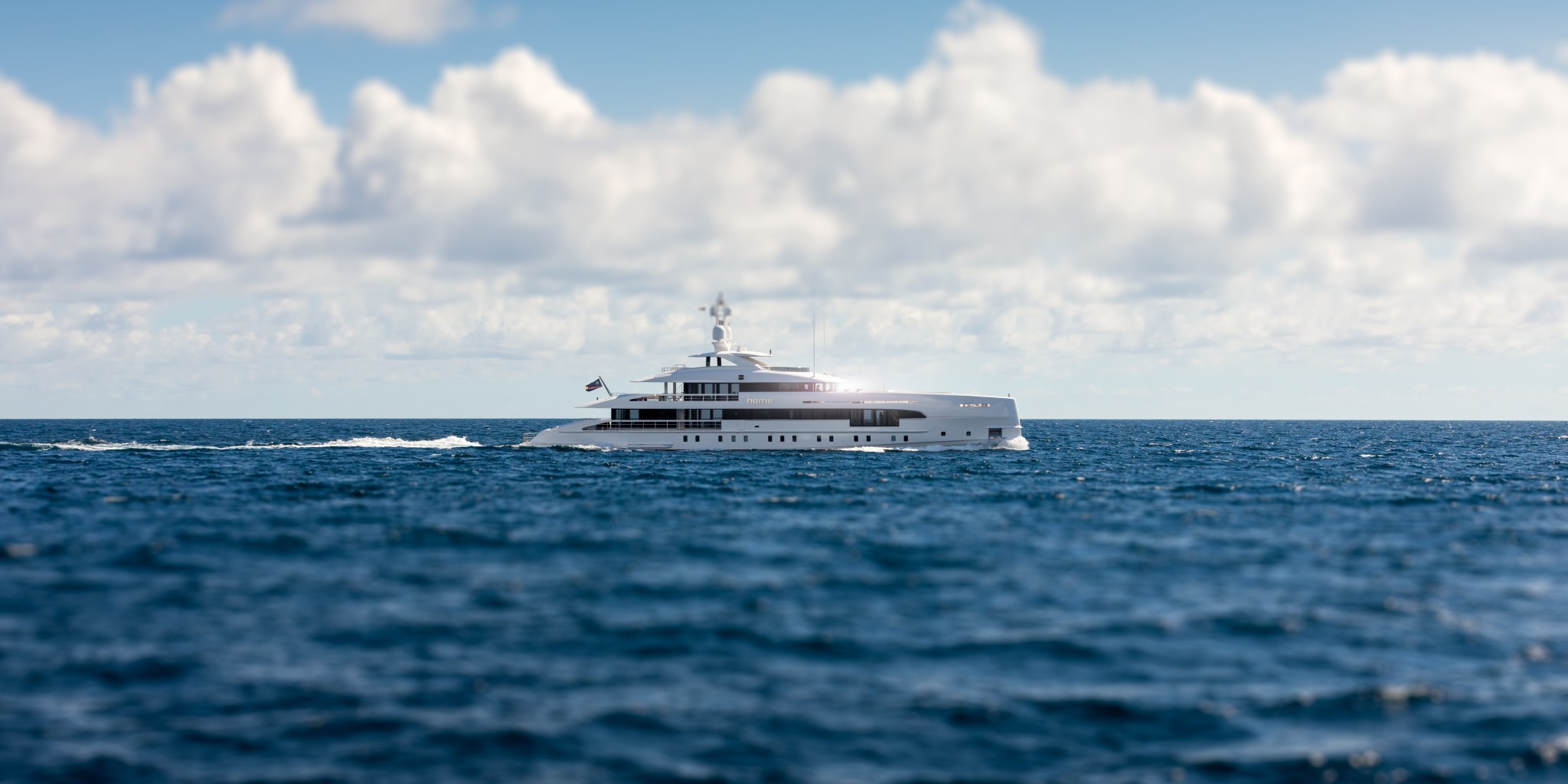In 1865, Frenchman Étienne Lenoir invented the world’s first motor boat by installing an internal combustion engine – his own design – in a barge and setting out to navigate the river Seine. Little did he known how his adventure would revolutionize the shipbuilding industry. In 2017, experts from the United Nations Conference on Trade and Development estimated that roughly 1.9 million liquid fuel-burning ships are navigating the world’s waters. And this number only covers commercial fleets. In the U.S. alone, roughly 12 million boats are registered for recreational use.

Technology
#Emobility
Raising the flag for Sustainability
Min Reading Time
Hybrid drives help preserve the oceans, reduce costs and, in the process, are more powerful than conventional marine engines. For many types of ships, hybrids are the best means of propulsion. And ZF always has the right transmission.
In times of increasing globalization, both maritime trade and tourism are going to keep growing. While the economy benefits from this development, the sea doesn’t: Depending on the application, most ships either use sulfurous fuel oil or diesel fuel which produces respirable dust. In addition to that, even with sound insulation, these engines generate a lot of noise. This impacts the port residents, but even more so the marine animals.
Stricter environmental regulations will come into effect for the world’s oceans starting in 2020; and in 2026, Norway will only allow ships that produce no emissions at all to sail its fjords. Many fleet operators and manufacturers have to rethink their propulsion system configurations, which makes ZF an ideal partner for them because it can deliver marine transmissions that can be integrated with an electric motor for complete zero emission operation.
Such hybrid designs offer advantages for many different types of ships, including
- Motor yachts
- Ferries
- Research ships
- Harbor tugs

All electric on the fjord: The Norwegian ferry “Vision of the Fjords” is equipped with two ZF hybrid transmissions that enable it to navigate the coastal waters of the Nærøyfjord with zero local emissions.
To this end, ZF is has added another Power-Take-In (PTI) to its conventional marine transmission product line. With this additional drive, an electric motor can transfer power to the propeller shaft with zero local emissions. This saves on fuel, reduces wear and tear in the main engine and is environmentally friendly. But the hybrid enables even more
features on the high seas. But what kind of features?
Motor yachts: “Full steam ahead” or “just drifting along”
The “need for speed” not only calls on us on roads and racetracks. Going full throttle, motorized yachts pack quite a punch. A hybrid transmission makes the ship even more dynamic because the electric motor can be used as an additional “boost”. Once the destination is reached, it's time to drop the anchor and relax. This is normally accompanied by noise and fumes. Those on board who don't want to do without the comfort of refrigerator, lights or other electric appliances need power. This is referred to as “hotel load” and is only generated in conventional boats when the engine is running. With hybrid drives, the diesel engine can be used as a generator while cruising, storing the energy in batteries.
Afterwards, when anchoring in a bay or at the pier, this power is consumed first – quietly and conveniently – to create a more idyllic atmosphere.
Ferries and research ships: now all electric and quiet on the waters
Humming, roaring, gurgling – when diesel-powered ships approach the dock, the engine room blasts noise ranging from 80-120 decibels. These are levels usually reserved for chainsaws or rock concerts, but commonly disturb people who live on the shores of coastal cities. For this reason and due to pollution, some ports are banning ships from entry unless they have a zero-emission operating mode.
However, it’s not only people who suffer from diesel ships. When in operation, their engines produce low-frequency vibrations that radiate under water, often for miles and miles. Over the long term, this negatively impacts fish and marine wildlife that rely on echolocation to find partners, prey or enemies. In a worst case scenario, entire shoals of fish leave their natural habitat.
This is a dilemma especially for research ships and ferries. Research ships want to produce good results and findings, but without burdening natural resources or marine habitats. Ferries, on the other hand, are operated along particularly picturesque or fast routes that touch on or cross human and marine habitats. Emissions and noise are detrimental in all of these situations, but these are also the ones where a hybrid drive’s electric mode can play out its advantages.
According to the UN,
1861852
commercially operated ships
were out on the earth’s oceans in 2017.
Tugboats and the coastguard: environmentally-friendly stand-by with the electric motor
It is understandable when ports want to avoid unnecessary pollution. However, there are types of ships that have to remain on stand-by due to the nature of their job. Tugboats and coastguard boats, for example, spend a lot of time idling. This heavily burdens the driveline. A hybrid can perform this function while simultaneously saving fuel and going easy on the engine. Another plus: If the ships are needed in an emergency, the power from the electric motor can be switch from stand-by to fully operational much more dynamically than with a diesel engine.

In brief: In ports and on the high seas, the demand for even cleaner propulsion solutions has risen. ZF’s hybrid-capable transmissions enable the company to respond to tomorrow’s requirements with the right answer today.

